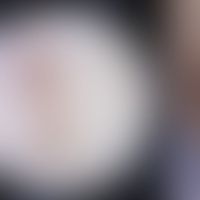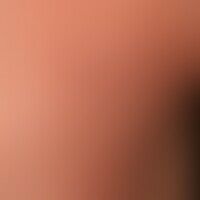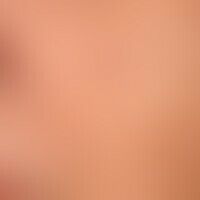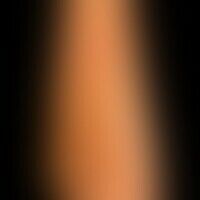Image diagnoses for "brown"
357 results with 1404 images
Results forbrown
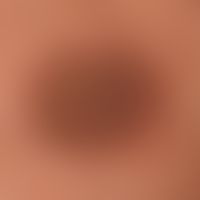
Keratosis areolae mammae acquisita L 82
Keratosis areolae mammae acquisita (occurred bilaterally and within a few months) advanced anal carcinoma

Acanthosis nigricans (overview) L83
Acanthosis nigricans (benigna): generalized clinical picture with pigmented, blurred, symptomless plaques in the axillae, genital area and inguinal regions.
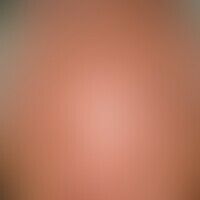
Lentigo solaris L81.4
Lentigo solaris: multiple, disseminated, a few millimetres to 1.5 centimetres in size, oval, roundish or bizarrely configured, sharply defined, yellowish brown to dark brown spots on the capillitium of a 68-year-old man with skin type I. Likewise there are isolated small actinic keratoses as well as alopecia androgenetica of the man in stage IV.

Keratosis seborrhoic (papillomatous type) L82
Multiple, at times moderately itchy seborrhoeic keratoses that have existed for years at different stages of development.

Hand and foot eczema, hyperkeratotic-rhagadiformes L24.9

Atopic dermatitis (overview) L20.-
eczema atopic in dark skin): here as partial manifestation of a generalized (face, neck, hands, lower leg and back of the foot) intrinsic atopic eczema Chronic brown-grey, blurred, itchy, rough plaques on lichenified skin.
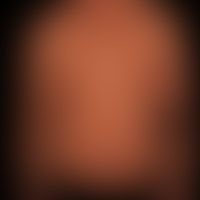
Kaposi's sarcoma (overview) C46.-
Kaposi's sarcoma:Generalization of angiosarcoma. Disseminated spots and flat plaques. Characteristic is the arrangement in the tension lines of the skin, whereby a striped arrangement is recognizable in places.

Nail hematoma T14.05
Nail hematoma: direct comparison of the outgrowing nail hematoma. Lower left after 8 weeks. On the right the reflected light microscopic images.
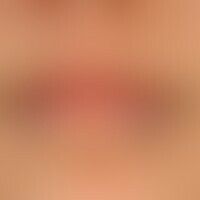
Cheilitis simplex K13.0
Cheilitis simplex. Rough, reddened, painful lips with erosions, and rhagade formation in a 17-year-old adolescent. Apparently caused by continuous irritation, two large, sharply defined, smooth, brown-black spots are still visible in the area of the lower lip (post-inflammatory hyperpigmentation).

Becker's nevus D22.5
Becker nevus:Detail enlargement: nevus on the left upper arm/shoulder in a 14-year-old adolescent.
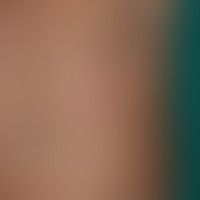
Leprosy (overview) A30.9
Leprosy. tuberculoid leprosy -TT-) Well circumscribed plaque with clearly elevated edges.

Acanthosis nigricans benigna L83
Acanthosis nigricans benigna: blurred, hyperpigmented, verrucous plaques in the thigh bends and especially on the penis shaft.
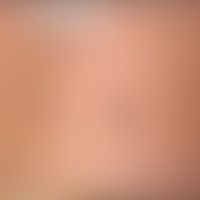
Nevus melanocytic (overview) D22.-
Several acquired melanocytic nevi in a 65 years old man. Especially the two conspicuous large melanocytic nevi did not show any changes in the last years. There is no need for surgical removal. Annual clinical controls are necessary.
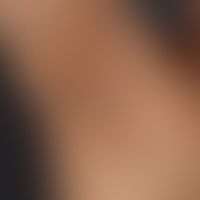
Acanthosis nigricans benigna L83
Acanthosis nigricans benigna: blurred, hyperpigmented, verrucous plaques; hyperhidrosis.
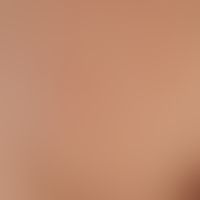
Nevus melanocytic halo-nevus D22.L
Nevus, melanocytic, halo-nevus. numerous depigmented, roundish, sharply defined, smooth, white spots with centrally located brown, slightly raised papules. 25-year-old patient with multiple halo- or sutton nevi occurring within a few months.
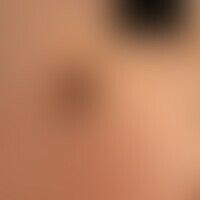
Nevus melanocytic congenital D22.-
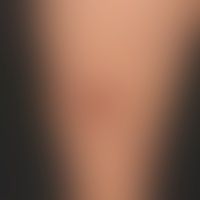
Nodular vasculitis A18.4
Erythema induratum (Nodular vasculitis): The 48-year-old patient has been suffering for 2 years from these intermittent, moderately painful, therapy-resistant plaques which tend to ulceration.
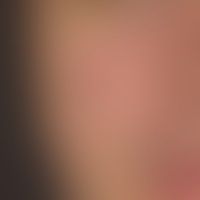
Early syphilis A51.-
Syphiis: papular syphilide, acne-like clinical picture with disseminated, non-itching, occasionally eroded, scaly papules.
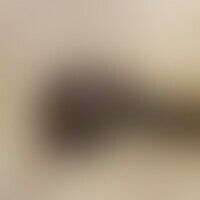
Basal cell carcinoma pigmented C44.L

Keratosis seborrhoeic (overview) L82
keratosis seborrhoeic: multiple flat wart-like skin growths that have persisted for years. arrows mark smaller, flat, light brown seborrhoeic keratoses. encircled: verucosal plaques or nodules that have existed for a long time (several years). patient complains of itching at times.
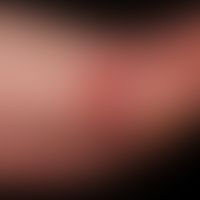
Melanoma acrolentiginous C43.7 / C43.7
Amelanotic acrolentiginous malignant melanoma: A "reddish spot" that has existed for years. It is said that this broad-based red node has been formed for a few months and has bled several times.
